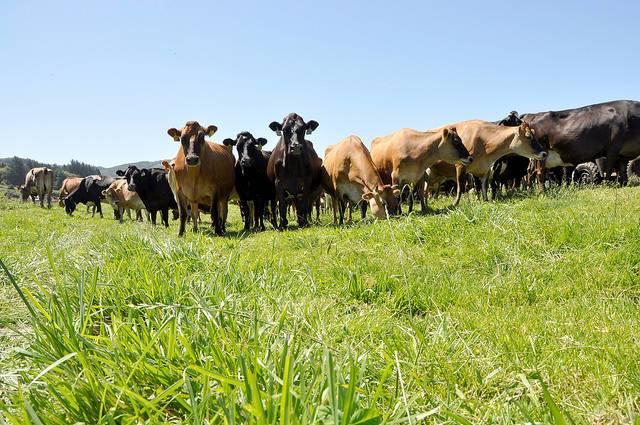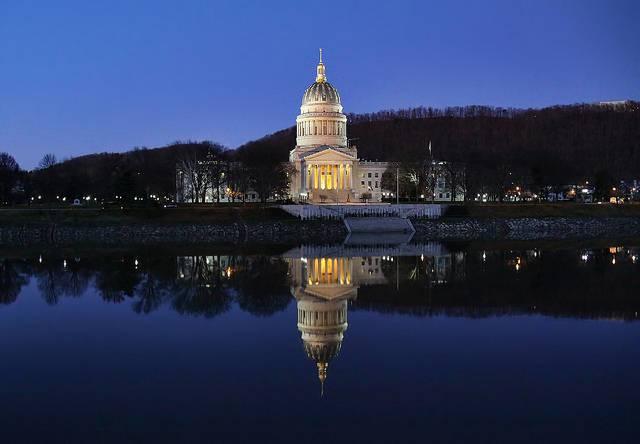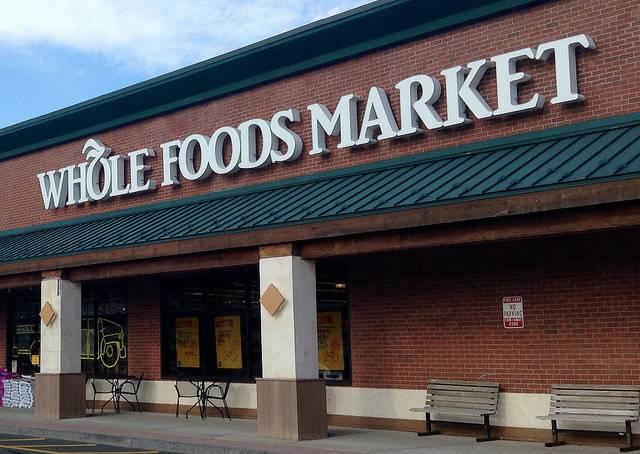Mars and Nestlé take steps to clean up their seafood supply


Atlanta Pledges 100 Percent Renewable Power by 2035


Atlanta has arguably been the capital of the American South for decades, from its moniker as “The City Too Busy To Hate” during the civil rights era to its hosting of the Olympic Gamess a generation ago. Now, according to the Sierra Club, Atlanta is now the largest southern city to commit to a future of 100 percent renewables.
On Monday, Atlanta’s city council unanimously passed a resolution that aims to run the city entirely on clean energy by 2035.
The one-page manifesto is short on specifics, but it behooves Atlanta to launch a series of steps. First, the council instructs the city’s sustainability office to draft a plan for the transition, which is to be publicly released by January 2018. If the city succeeds with these goals, it could power its own operations entirely with clean energy sources by 2025; citywide, renewables will be sole source of power a decade later.
This blueprint acknowledges that almost a quarter of the city’s population lives in poverty, and claims that all citizens will have a stake in Atlanta’s energy transformation.
To that end, Atlanta's government plans to explore programs that encourage companies to hire locally. The city is also looking to help workers retrain and find employment in new sectors if their jobs disappear due to a decrease in fossil fuel consumption.
One could also say that this resolution offers an “all-of-the-above” energy policy. In addition to low-hanging fruit such as weatherization and the installation of newer lighting, Atlanta will explore a range of other options to meet this 100 percent target, including district heating, microgrids and solar-powered hot water heaters.
These goals are a huge jump from the city’s earlier efforts to improve its renewable power capacity while reducing its greenhouse gas emissions. In its most recent sustainability report, Atlanta said its sustainability directives included a goal to source 10 percent of its power from renewables by 2020, while slashing its total emissions by 20 percent. At the end of 2016, Atlanta had already accelerated its solar capacity by installing 28 new systems, half of which are in low-income neighborhoods.
The big question, of course, is how local lawmakers plan to pay for all of this.
The city’s Office of Sustainability will be able to request the funds necessary in order to meet the renewables target, but it may also explore private-public partnerships. Between the city’s business community and universities, as well as its participation in a national “smart cities” program, Atlanta’s civic leadership should be able to develop the capacity to meet this ambitious goal – but 15 years can run by fast.
Atlanta joins a short but growing list of U.S. cities that have pledged to become powered entirely by clean energy in the next 15 to 20 years. This roster includes small wealthy towns such as Aspen, Colorado, and East Hampton, New York, along with larger California cities including San Diego, San Francisco and San Jose. Two years ago, Burlington, Vermont, claimed to have become the first city to run entirely on renewables.
With this move, Atlanta is the first city in the southeastern U.S. to start the switch to 100 percent renewables. While its politics trend more left than the rest of Georgia, renewables are gaining momentum across the entire state. According to a Department of Energy survey, the clean-energy sector now employs over 5,000 people across all of Georgia – more than twice the amount of jobs in the fossil fuel power generation sector.
Finally, what was once thought an unlikely alliance between the Sierra Club and Tea Party groups nudged the state’s legislature to pass a law that made it less cumbersome for residents and business to install solar systems. The local utility, Georgia Power, promised to add 525 megawatts of wind and solar power by 2020; pressure from the Sierra Club convinced the state’s utility commission to more than triple that goal to 1,600 MW.
Atlanta is often described as the capital of the “New South.” As the city of 456,000 promises to eschew coal and natural gas, that nickname will take on a new meaning. It has much to prove, however; the NGO Environment America estimated that Atlanta ranks 40th in total solar capacity among the country’s 50 largest cities.
Image credit: Rick Austin/Flickr
Investigation Raises Questions About USDA Organic Milk Certification


Organic milk is a huge business. While recent U.S. government statistics show a short-term dip in sales, estimates suggest that annual sales in this sector total more than $40 million annually.
Concerns over the nation’s food supply -- along with the widely-held belief that cows grazing on grass and organic feed results in a more healthful and nutritious product compared to conventional milk-- have together driven consumers to pay a far higher premium for organic dairy products at retail chains from Whole Foods to Target. The organic milk business is especially booming in California, as production figures suggest another large jump in production and sales from the previous year.
But a Washington Post investigation published this week warns consumers that they may be paying for a product that does not meet their expectations.
The Post, led by reporter Peter Whoriskey, visited the operations of Aurora Organic Dairy, located outside of Greeley, Colorado, last year. Aurora’s milk is sold as a private-label product at chains including Costco and Walmart. Whoriskey and his team, however, allege that customers may not be purchasing the exact product for which they paid.
Certified organic dairies are mandated to have their cows graze regularly during the growing season instead of being confined to feedlots or barns. But at a dairy complex that boasts as many as 15,000 cows, the newspaper’s investigative team only saw a few hundred cows grazing, at most. Satellite photos taken last July confirmed the team’s suspicion that only 10 percent of the herd was out grazing at any given point in time.
The newspaper then asked dairy technology scientists at Virginia Tech to analyze eight brands of milk that were produced during the grazing season. Researchers tested for milk substances including conjugated linoleic acid (CLA) and alpha-linoleic acid (ALA), which tend to appear at higher levels in organic milk than in conventional products. The tests revealed that while organic brands such as Prigel Family Creamery, Snowville Creamery and Horizon Organics scored relatively high, the levels in Aurora’s milks were not much higher than the private-label conventional brands sold at Whole Foods and Safeway.
Conversely, linoleic acid -- an omega-6 fat -- tends to be found at a lower level in milks that are pasture fed; conventional milks often have high levels of this substance. But Aurora’s milk tested higher on that metric than the conventional Whole Foods and Safeway milks.
So, what’s going on? The Post concluded that the rising popularity of organic milk has resulted in the rapid expansion of dairy operations, especially in western states. And in the effort to expand and meet consumer demand, some dairies are cutting corners. Small organic dairy farmers -- who face more regulations and higher costs -- have long complained that these larger operations, like Aurora, are violating organic farming guidelines.
Another problem is that the USDA’s rules covering the inspection of organic dairy farms are hardly stringent. Only 1 in 20 inspections are actually unannounced; in fact, farmers can hire their own inspectors from a list of private firms and organizations that are licensed by the USDA, and those visits can be scheduled days or even weeks in advance.
In sum, if a dairy company does not like the results of one organization’s inspection, it can simply hire another to find the results the company wants.
The USDA says it audits those inspectors’ records every two and half years. But in the case of Aurora, it is obvious that some inspections are falling through the cracks.
These problems bedeviling the USDA’s organic inspection process are hardly new. A 2013 internal review of the USDA’s internal processes revealed that inspectors conducting annual reviews did not always take consistent enforcement actions when violations were found. Part of the problem was confusion over the rules and what actions needed to be taken in the event of noncompliance.
“This can lead to organic milk operations shopping for agents who are lax in their classification of issues identified in the yearly inspection process or who do not take the appropriate enforcement actions,” the USDA report concluded.
Aurora has denied the accusations raised by the Post, and sought to rebut the investigative team’s conclusions one by one. But the paper also mentioned that Aurora has been the subject of suspected rules violations in the past. As far back as 2007, the USDA accused the dairy of “willful violations” of organic guidelines. That case was resolved, and Aurora’s business continued to grow at a healthy pace.
Whether or not consumers are really hurt by these findings is anyone’s guess. Assessments of organic versus conventional milk are all over the map, though the consensus is that the fatty acids more prevalent in organic dairy products provide for a more healthful option in the cereal bowl or smoothie.
The obvious hurt is in consumers’ pocketbooks, as they may be paying far too much for a product that does not provide the benefits advertised.
But those who are really harmed are the small organic dairy farmers who play by the rules, only to see their margins squeezed as larger operations have the ability to scale and force down milk prices. And that discrepancy should be enough to spur the USDA to take its organic inspection guidelines far more seriously, instead of allowing them to be outsourced and become subjected to what can be viewed as a pay-for-play scheme.
Image credit: NRCS Oregon
West Virginia’s Largest Utility Sees Renewables -- Not Coal -- in its Future


The Mountain State may be the heart and soul of the coal industry, but West Virginia will see more renewables incorporated into its electricity grid in the coming years.
Appalachian Power, West Virginia’s largest utility, recently indicated that more solar and wind power will be part of the state’s future. In a recent interview with the Charleston Gazette-Mail, Chris Beam, who became Appalachian Power’s president in January, said that clean-energy technologies are crucial to the utility’s future, in addition to cheaper natural gas, if it hopes to attract more corporate customers.
Those companies include the likes of Google and Amazon, which are interested in areas of West Virginia as potential sites for data centers. But those new facilities will only come to the state if these companies are guaranteed that they can be powered by 100 percent renewables.
Beam’s business case for renewables includes the fact that more customers in other markets Appalachian serves, such as Tennessee and Virginia, are looking to power their homes and businesses with clean energy.
To that end, the power company filed its latest long-term electricity blueprint, or Integrated Resource Plan (IRP), with the state of Virginia. The plan outlines several goals for the next 15 years, which include bringing 500 megawatts of solar and 1,350 megawatts of wind power online and implementing more energy storage and grid efficiency technologies.
Mindful of the reactions this shift could spark across West Virginia, Beam explained the political reasoning behind the company’s position.
No matter who is in the Oval Office or at the governor’s desk in Charleston, the reality is that energy companies look ahead to 10-, 20- and even 50-year cycles. Instead of trying to comply with four- or eight-year policy shifts, utilities like Appalachian and its parent company, American Electric Power, must gauge the direction in which the overall power markets are headed.
“Our investments have to span what could be multiple governors in the governor’s mansion or multiple presidents sitting in Washington, D.C.,” Beam told the Huffington Post. “We don’t get into the four-year swing based on who is sitting in what chair, but more around what is the best thing to do from our customers’ perspective.”
And that means coal will be used less in West Virginia moving forward. Compared to much of the country, which has ridden the natural gas boom, Appalachian Power generates about 60 percent of its generates from coal. But even that is a drop from previous years, and Beam projects that share will decrease to 50 percent by 2020. But overall, coal remains king in West Virginia: The most recent figures from the U.S. Energy Information Agency estimate that over 96 percent of the state’s electricity was generated from coal in 2014.
Appalachian Power has a long path ahead in order to match deeds with words. Last year the utility reached an agreement with a wind farm in India to source 120 MW of power. That brought the utility’s total amount of wind power to 495 MW, which is distributed across West Virginia and Virginia. The company does not yet generate or sell any solar power.
It will come as no surprise that West Virginia is a laggard on the solar power front, but the state’s nascent renewables sector is steadily growing. According to the trade group Solar Energy Industries Association (SEIA), the state ranked 42nd in the U.S. with a 2015 installed solar capacity of 3.4 MW – but that was a 61 percent increase from the previous year.
The reality Appalachian and other utilities face is that no matter where their political realities lie, economics will drive their investment decisions. And as electricity storage technologies advance and solar and wind become even cheaper and more scalable, these new sources of power will win out – even in coal country.
Image credit: O Palsson/Flickr
The 3 New Rules for the 21st-Century Jobseeker


By Shannon Houde
Seismic shifts in the world of recruitment have changed the hiring landscape dramatically. Today’s jobseekers need strategies to navigate this new terrain.
The last 15 years have seen major changes in the world of recruitment. When I started out as a hiring manager, we advertised in the newspaper and on the major jobs websites, and CVs arrived by post (usually) or email (occasionally). CVs included a standard summary of a person’s career history, and we’d pile them on the desk and pick through them with a highlighter to extract the information we needed before calling to arrange interviews.
Today’s hiring landscape couldn’t be more different. There has been a seismic shift in the way recruiters do their jobs: Vacancies are circulated through social media and informal networks, algorithms scan digital applications, resumes get a maximum 30-second pass by a pair of human eyes, and recommendations from a mutual connection are worth their weight in gold.
This new way of hiring demands a new strategy for 21st-century jobseekers. Get with the times, or get left behind!
Here are my three new rules for upping your game to land your modern-day dream job.
1. It’s about them, not you
The first rule is simple: It’s a buyer’s market, and the competition is fierce.
The days of writing a generic CV that describes your career history and sending it out to all and sundry are long gone. Today’s CV serves a very different function: It’s a marketing tool that should speak to the hiring manager, not a self-summary, so it’s crucial to tailor your application to a target/niche audience that you decide on before attacking the market.
Set yourself apart from the crowd by making it easy for the recruiter by showing them what they want to see. Unpick the job description, map your skills to the position on offer, and use their key words and phrases.
The way I recommend my clients approach this challenge is is through an exercise I call Mapping Your Skills to the Market. Check out my blog for a step-by-step guide to this technique.
2. Expect to be Googled
When I mention ‘personal branding’ to clients, they often shudder. But like it or not, personal brands are a critical aspect of your jobseeker’s strategy, because, guess what? You already have one.
Whatever comes up on the first page of a Google search result for your name, location and a couple of keywords is your personal brand. Either you take control of it, or the Internet oracle will do it for you.
Google yourself, and see what comes up. No LinkedIn or Twitter account on the first page? Re-write your profile and bio, including as many keywords as you can. And upload a photo that shows you looking professional, approachable and, preferably, smiling! Have a blog? Make sure the headlines and tags are SEO-friendly.
For more tips, see here: Use Your Personal Brand to Land Your Dream Career.
3. Put relationships before resumes
Recommendations and referrals from mutual connections have never been more valuable to recruiters, and that means you need them!
They influence more than 50 percent of jobs being filled, so it’s absolutely crucial to get out there and build your network of contacts if you want to get ahead – especially in the relatively small world of sustainability and impact professionals.
Make meeting new people in your industry part of your jobseeker strategy. It doesn’t have to be awkward or sales-y. Think of it more as a professional friendship that can be mutually beneficial and be sure to “give as much as you get." The people you meet at events and conferences, former colleagues, and project partners can potentially have a much greater bearing on your professional development than trawling through jobs boards and cold-calling hiring managers with a generic resume. See my blog on building strong networks for advice on how to do it.
Are you navigating the hiring landscape? Have you found these rules to be true? Let me know in the comments below. If you’d like some bespoke support to help land your dream job, you can find me @walkoflifecoach or www.walkoflifeconsulting.com
Image credit: Walk of Life Consulting
Shannon Houde is an ICF certified executive and career coach who founded, Walk of Life Consulting, the first international professional development advisory business focused solely on the social impact, environmental and sustainable business fields.
The Social Good Dilemma for Businesses


By Clementina Oliveras
Given the current political climate and recent changes made under the new administration, Americans are actively looking for ways to make a difference and stand up for causes they are passionate about.
Data shows a majority of consumers will go out of their way to support a business that they believe backs a worthy cause, making it a vital time for brands and companies to not only voice their stance on current issues, but also implement methods to make a difference in a socially responsible way. Businesses must focus on growing their companies from the inside out, attracting both socially responsible customers and employees.
In response to the desires of today’s consumers, we’re seeing businesses jump on the corporate social responsibility trend at a rapid clip, following the lead of business giants like Google and Microsoft by investing in leaders who will step up as advocates and problem-solvers regardless of political change. By raising the bar of commitment to sustainability and responsibility, we are beginning to see companies alter their business models entirely in order to incorporate more social responsibility in the workplace.
Lyft recently announced a new program that gives riders the opportunity to round their fare price up to the nearest dollar and donate the difference to a charity of their choice. As more companies find ways to get involved in worthy causes, others that ignore the social good shift may soon take a hit on the talent they look to attract and retain.
In fact, according to a recent study, 91 percent of millennials would switch brands to one associated with a cause -- demonstrating that CSR is not only a good idea, but it's now vital to a brand’s success. Even further, the Cone Communications survey found that 62 percent of millennials would be willing to take a pay cut in order to work for a socially responsible company. This demonstrates that there is not only a desire to support social causes, but also that millennials are willing to dedicate their life's work to making a difference.
Businesses like Uber that haven’t been as involved in this wave of social change have been bashed and widely discredited by consumers who are committed to using fair and responsible services, ultimately resulting in the deadly #DeleteUber campaign that consumed the Internet in January. Movements as drastic as disassociating with a brand entirely stemmed from the outcome of the 2016 election, and social concerns have spilled into various cultures, communities and companies across the country.
Political change calls for cultural change
As the number of organizations negatively affected by the new administration increases, (such as TerraCycle, KultureCity, and Veterans Health Administration) the number of businesses looking to create change will grow.
While many companies focus specifically on CSR programs as a way to give back, this is only a single component of their overall business. But many other organizations build their entire business models around supporting nonprofit organizations. In fact, “cause” sponsorship is predicted to reach $2.06 billion in 2017, an increase of 3.6 percent from 2016.
Look at Toms Shoes, for example. The company was one of the first to mainstream the one-for-one business model, where for each product a consumer buys, a comparable product is donated to a charitable cause. Off the success of Toms’ model, many other brands have continued to adopt a similar strategy. This Bar Saves Lives and Warby Parker are two other companies that were fundamentally built on the idea that consumers will do (or pay) a little more to make a big change.
Since the company’s creation twelve years ago, Toms has put shoes on over 10 million needy children. And Warby Parker donated 500,000 pairs of glasses to those in need all around the world in just three years.
It is abundantly clear that the success of these companies is a direct result of consumers’ desire to support a worthy cause and transform traditional corporate standards and practices for the better.
There is room for this type of company in every industry, especially in those built around environmental and cultural assets like the travel industry. According to research we conducted at my company, Wander, over half (55 percent) of consumers have made a socially responsible purchase in the last year. Social consciousness is even more prevalent among travelers, with a whopping 83 percent of travelers making socially conscious choices on their trips. It’s clear that people are looking to make an impact, and just need the chance.
Millennials expect corporate cultural change
As corporations look to hire college graduates, it is imperative to integrate socially responsible business models into their organizations in order to gain the trust of new talent. Social responsibility is no longer just a trend, but a lifestyle and ultimately a “deal-breaker” for millennials in the workplace. With many industries beginning to fully integrate CSR programs and sustainable business models into their organizations, it is essential for businesses to develop these initiatives in order to stay current and attract the attention of millennials searching for ways to give back.
Companies that are aware of these needs are tailoring their business models to reflect this desire for social good in all aspects of everyday life, making this choice to do social good an easy one.
Millennials are consciously making socially responsible decisions -- whether at home, at the office or on vacation. And businesses offering them the choice to do good will greatly benefit and allow their brands to grow successfully.
Businesses are leading the way by ultimately offering a sustainable and socially responsible lifestyle. From corporations standing as public advocates for those in need, to businesses offering jobs that incorporate social good, to companies offering services that provide the user a chance to give back, our world would be a whole lot more connected if we all chose to give a little more.
Image courtesy of Wander
Clementina Oliveras is the founder of Wander. With a background in Economics and Sustainable Tourism, Clementina has been involved in making her dreams come true. First with a boutique hotel built from scratch in La Riviera Maya, Mexico, that run for 7 years and now with a higher purpose of building a socially responsible business. She drives Wander and the team with determination; passion and pushes to make things happen to turn Wander into a successful adventure.
Fashion For Good program starts up with grant from the C&A Foundation


Whole Foods In Wall Street’s Crosshairs After Declining Sales


Whole Foods may have made made the organics movement mainstream, but now the company is in deep trouble.
After six consecutive quarters of declining sales, the Austin, Texas-based supermarket chain has been subjected to rumors that it is a target of acquisition, with Kroger, Amazon and private equity firms all mentioned as potential suitors.
The reasons for the chain’s decline are all over the map, but the bottom line is that customers are not walking in as often and not buying as much at the checkout line: Its stock price traded at around $56 a share in early 2015, a price that has since fallen by a third.
In some ways, Whole Foods has become a victim of its own success. “Everyone else has copied Whole Foods,” wrote reporter Vanessa Wong of Buzzfeed.
And that is true to an extent: Whole Foods is largely responsible for transforming the modern grocery store. Austere shelves illuminated by harsh fluorescent lighting gave way to a bucolic “customer experience.” Many grocery store chains have followed the retailer’s lead, eschewing the industrial linoleum for acid-stained concrete floors and softer light. And these same chains have added more organics, additional ethnic foods, and loaded up on once-exotic eats and drinks – while often pricing these products cheaper than Whole Foods.
Whole Foods has faced hiccups before. During the 2008-2009 Great Recession, analysts predicted the company was in for a long, painful slog. “Back then, we told our clients to sell off their Whole Foods shares, as we thought the financial crisis would convince families to shop there less and more often at cheaper stores,” a retired Wells Fargo financial advisor, who declined to be named in this article, told TriplePundit. “Boy, were we wrong.”
Concerns over contaminated food, public health, GMOs and the country’s food supply in general buoyed Whole Foods. The chain did close a few stores during the recession, but it continued to expand. Meanwhile some upstarts, such as Tesco’s Fresh and Easy, came and went.
But while Whole Foods exhorted shoppers to buy its goods in order to change lives from Oaxaca to Zambia, not everyone who worked for the company was feeling the love.
A systematic overcharging scandal only added to the chain’s perception as “Whole Paycheck,” and countless memes mocked the company as an overpriced and self-important hipster emporium. Bizarre product rollouts, such as pre-peeled oranges and asparagus water, helped to pile on the company’s too-cool-for-school reputation. Furthermore, a company that claimed to save consumers from Big Food had its own share of public relations nightmares – most notably revelations that some of the stores’ products were the outcome of prison labor.
Meanwhile, Trader Joe’s, which has less selection but better prices overall, has succeeded luring away more consumers. And Sprouts Farmers Market, which is best described as a hybrid of TJ’s and Whole Foods, is winning over shoppers with its lower prices.
Whole Foods says it is listening. The company is planning a line of simplified and lower-priced 365 stores, named after its private-label products that hold their own compared to their competitors’ costs. So far, only a handful of these new stores have opened; the location in the gentrified Silver Lake area of Los Angeles is reportedly doing well a year after opening its doors. A new location in Houston, however, was put on hold as of Monday. And say farewell to any aggressive expansion strategy: The company’s once-ambitious plan to open 1,200 stores nationwide has been curtailed, Bloomberg reported earlier this year.
While the outlook is a grim one for Whole Foods' shareholders, executives and, of course, employees, overall health-conscious consumers are the big winners as organic foods become more accessible and cheaper. But now Whole Foods no longer has a stranglehold on what was once a niche market; like other retailers, the company will have to retool and adapt to fickle consumers’ shifting loyalties if it hopes to be viable in the long run.
Image credit: Mike Mozart/Flickr
The $150 Million Manila Trump Tower and a Murdering Dictator’s White House Invitation


Transparency International has long described the Philippines as among the more corrupt nations on earth, one of many reasons why the country’s biggest export has long been its people, who work abroad from the U.S. to the Middle East. But never mind that.
Over the weekend, U.S. President Trump invited the Philippines’ president, Rodrigo Duterte, to the White House -- a move that stunned human rights advocates, as well as the U.S. government agencies that are usually contacted about such state visits in advance.
The invitation, which was soon followed by a Bloomberg interview during which Trump said he would be “honored” to meet North Korean dictator Kim Jong Un, ensures that the next 100 days of this administration will be as much of a roller coaster as the first – with most polls suggesting that only about 40 percent of U.S. citizens are enjoying the ride.
Trump’s latest diplomatic foray raises even more eyebrows, since Duterte’s invitation was made in the name of seeking “cooperation” in the region to address rising tensions with North Korea, White House Chief of Staff Reince Priebus told ABC's "This Week."
At a time when more businesses are pledging more transparency about everything from their political donations to their sourcing policies, Trump’s invitation raises even more alarm bells about his family business.
One of the president’s business partners, Jose E.B. Antonio, constructed a $150 million Trump-branded office building in the Philippines’ capital, Manila. And last fall Duterte named Antonio as a special envoy to the U.S.
The complex offers $750,000 one-bedroom apartments with stellar views in a nation where per-capita income is just below $3,000 annually. It prominently featured Trump’s daughter and White House advisor Ivanka Trump in branding – though those articles have since been scrubbed from the Manila building’s website.
As is the case with other Trump-branded ventures, from India to Brazil, the deal raises questions about whether his companies will score favors from local and national leaders not afforded to other businesses. In Turkey, for example, President Recep Tayyip Erdogan demanded several times that the Trump name be removed from a high-rise office complex in Istanbul -- including again after his first travel ban in January. But he has since had a change in tone. The Trump Towers project in Istanbul still brandishes the president’s name.
But Trump’s deals in the Philippines raise questions beyond shady business dealings and allegations of special favors or tweaks in policies. Since Duterte ascended to the Philippines’ presidency last summer, Amnesty International and other human rights organizations have linkd his anti-drug crusade to the murders of at least 7,000 citizens.
Amnesty International says Duterte’s “war on drugs" has largely been waged against the country’s poor. Accounts include the hiring of vigilante killers, as well as the planting of evidence in order to incriminate suspects. The behavior of many unrestrained police forces, whose the tactics resemble those of Islamic State more than responsible law enforcement, stirred condemnation both from within the Philippines and across the world.
The outcry reached a point at which the nation’s top law enforcement official said that he would cease police officers’ participation in this drug war earlier this year, but Duterte insists that his policies will continue.
Duterte’s policies have not been designed to convince more Filipinos to stay; at last count, the country’s government estimated that 2.4 million of its people were working abroad, in sectors as diverse as medicine, retail, real estate development and tourism. Though those latest figures are from 2015, before Duterte took office, media reports suggest overseas workers wire home almost $27 billion in remittances a year, or 8.5 percent of the Philippines’ gross domestic product. With those remittances in mind, Duterte has not put forth any policies to encourage Filipinos to return home and invest; instead, he suggested establishing a government agency that would meet the needs of those overseas workers – and ensure those funds would continue to be wired from abroad.
But Duterte has succeeded in landing a coveted invitation to Washington D.C., and potentially Mar-a-Lago, from the current U.S. president, who is reportedly still keeping close tabs on his own business ventures. Instead of working to make his country a safer haven in which to invest and boost jobs nationally, Duterte has engaged on a cynical policy that comes at the expense of many of his fellow citizens’ lives.
Trump’s call to Duterte comes only a few days after he described the U.S. Constitution as “archaic” – suggesting he is looking for tips on running a government from Duterte, who has been able to suppress dissent due to his supermajority in the country’s Congress.
Image credit: Government of the Philippines
Pork Producer Smithfield Eyes the Human Organ Market


Last month, Reuters profiled Smithfield Foods' new bioscience unit, where the company will explore a range of applications for its meat production business. Among the potential opportunities are new methods for tissue regeneration and the development of human organs for transplant surgeries.
So, are we entering a brave new world of extending human life at the expense of animal welfare, or is this simply a smart long-term business decision? After all, it is not as if the U.S. pork industry is suffering: The sector is bullish on its short term prospects and expects a 3.5 percent increase in production this year.
As any business school professor would tell you, venturing outside a company’s core business -- or “adjacencies” -- can result in great rewards, but it comes with great risks. Church and Dwight, a 170-year-old cleaning products and consumer brands company, found great success with its Arm & Hammer brand, which long ago extended from baking soda into toothpaste, deodorant and cleaning products. On the other hand, ventures such as Trump Steaks, Trump Vodka and Trump University have not fared quite so well.
Nevertheless, as Sarah Zhang of The Atlantic pointed out this week, pig products have long been transformed into human healthcare solutions.
A century ago, childhood diabetes was a death sentence. Then, researchers at Eli Lilly figured out that insulin extracted from pig pancreases could save lives. Former first lady Barbara Bush underwent open heart surgery eight years ago in order to receive a replacement heart valve from a pig. Heparin, a common blood thinner, is extracted from porcine intestines and has been on the market since the 1930s. And Smithfield already has a business selling pork byproducts, such as materials that end up as the base for treating medical conditions such as hypothyroidism and deep vein thrombosis, to pharmaceutical firms.
Smithfield’s new bioscience arm comes as scientific research indicates that pigs and humans have more in common genetically than previously thought. And earlier this year, Salk Institute for Biological Studies in La Jolla, California, confirmed that it is possible to grow human tissue within a pig. Those vested in this science often say they are driven by the ongoing shortage of organ donations, despite years of public awareness campaigns.
This new business division will find Smithfield partnering with scores of organizations, including universities, pharmaceutical companies and advanced robotics firms, the company said. One such group, the Advanced Regenerative Manufacturing Institute (ARMI), has received funding from the U.S. Department of Defense, which seeks progress on the replacement and repair of human tissues to treat soldiers during armed combat.
Not so fast, say some observers.
The meat industry, and pork producers in particular, lag behind when it comes to animal welfare in the view of the sector’s most vocal critics. Awareness campaigns by organizations such as the Humane Society have convinced more companies to push their suppliers to change how they treat their animals. The development of even more robust treatment options in the name of human health will excite many future patients, yet it will raise questions from animal rights activists of just how far society should go in harvesting animals in the name of public health.
And whether these porcine-based organs have their DNA modified or become human-porcine “chimeras,” companies such as Smithfield, healthcare providers and consumers will need to have a frank discussion over the ethics involved in this new medical revolution.
Image credit: Tambako the Jaguar/Flickr